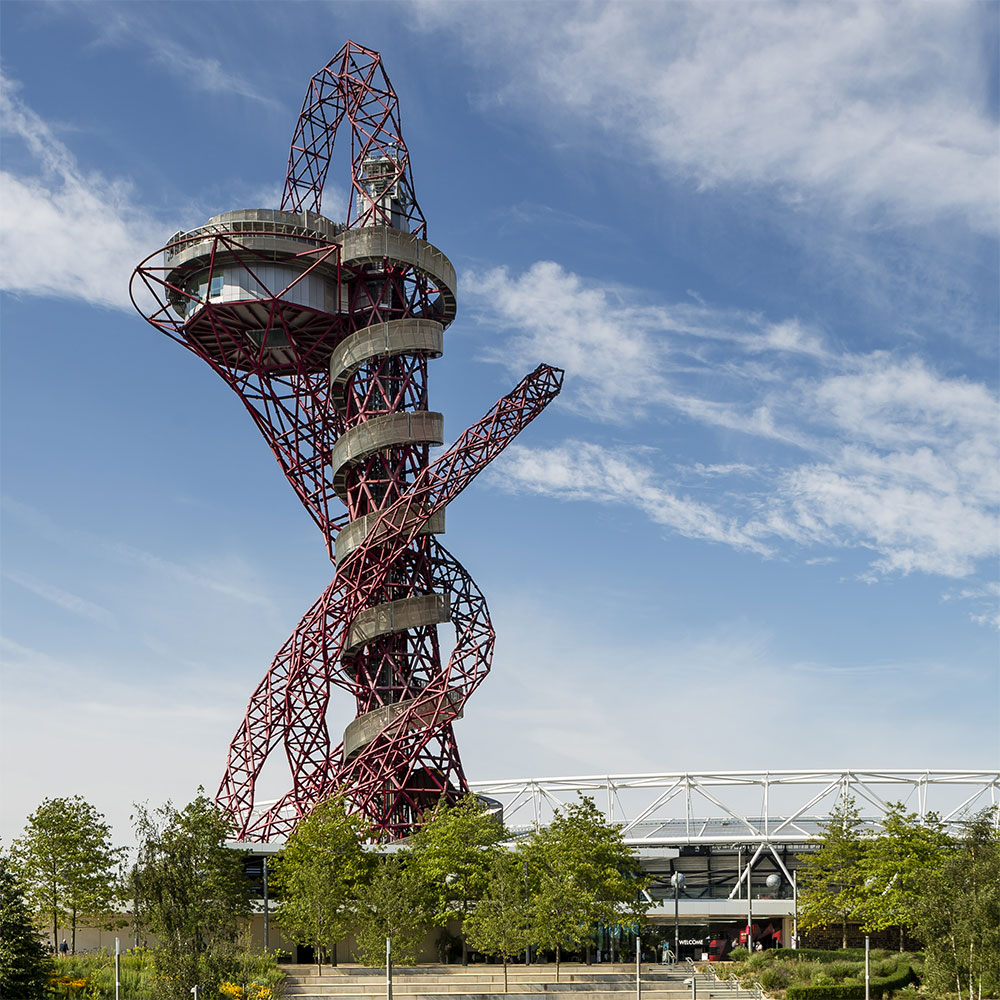The ArcelorMittal Orbit is made from 600 pre-fabricated star-like nodes. These were precision-built by a team of 100 staff in Bolton, Lancashire and assembled on site by four men and a crane. This created the superstructure of the sculpture before the lifts and interior viewing platforms were added.
There are five uses for steel in the ArcelorMittal Orbit; the red super-structure, the spiral stairs, the Corten steel of the canopy, the highly polished steel mirrors in the upper viewing platform – designed by Sir Anish Kapoor and Carsten Höller’s Slide twisting around the sculpture. 35,000 bolts were used in the construction of the ArcelorMittal Orbit and it would take 954 steel drinks cans stacked on top of each other to reach the top of the sculpture.
The ArcelorMittal Orbit delighted 130,000 visitors during the Games and reopened on 5 April 2014, when the south of Queen Elizabeth Olympic Park reopened as a beautiful new open space for London, with meadows, wetlands and waterways. The Slide – a collaboration by Carsten Höller and Sir Anish Kapoor – opened in the summer of 2016.
